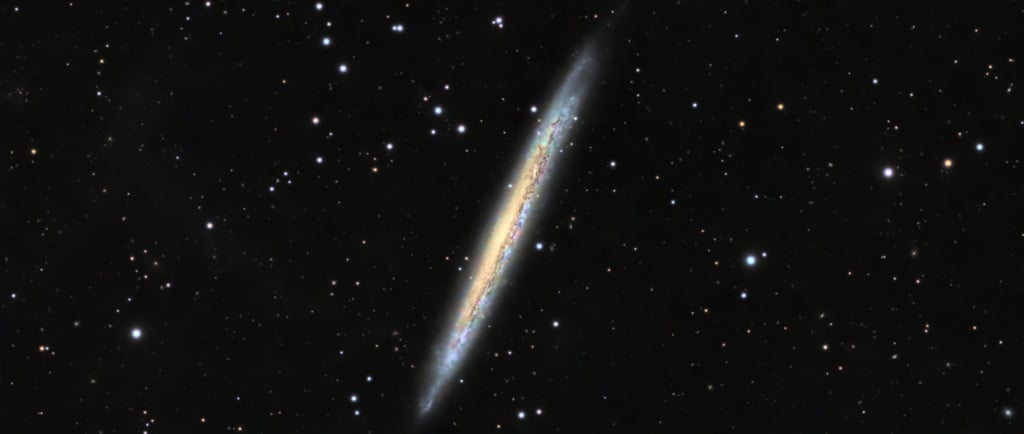NGC 5907: The Splinter Galaxy


Introduction to NGC 5907
The spiral galaxy known as NGC 5907, often referred to as the Splinter Galaxy, captivates astronomers and stargazers alike. Located in the northern constellation of Draco, this gem of the cosmos is notable for its striking appearance and intriguing structure. Formed approximately 50 million light-years away from Earth, NGC 5907 presents an opportunity for both amateur and professional astronomers to explore the depths of the universe.
Characteristics of the Splinter Galaxy
NGC 5907 is characterized by its elongated shape, resembling a splinter—hence the name. This galaxy is classified as a spiral galaxy, which is significant due to its distinct rotational structure. The galaxy spans roughly 100,000 light-years across and is home to a plethora of stars, gas, and dust. Observations have shown that the galaxy displays a well-defined disc with an active star formation environment, making it a subject of interest in astrophysical studies.
Observing NGC 5907
For those wishing to observe NGC 5907, the best opportunity arises on clear nights. This galaxy can be found away from the bright lights of urban areas, maximizing visibility. With the right telescope, viewers can appreciate its unique spiral structure, along with its faint halo of stars that envelops the core. The surrounding constellation of Draco also enhances the viewing experience, as it is rich in other celestial bodies, including several notable stars and clusters.
Many amateur astronomers enjoy photographing NGC 5907, capturing its beauty for both study and art. Its relatively low surface brightness makes it a challenge, yet extremely rewarding, for astrophotographers aiming to document the vastness of space. Utilizing different exposure times and filters can reveal more details within the galaxy’s intricate features.
Scientific Significance of NGC 5907
The Splinter Galaxy holds scientific interest beyond its aesthetic qualities. Research into NGC 5907 has provided insights into galaxy formation and evolution. It serves as a significant case study for understanding the dynamics of spiral galaxies, particularly in examining how they interact with surrounding dark matter and gas. Additionally, NGC 5907 hosts various types of celestial phenomena including supernovae and unexpected variable stars, further enriching the scientific dialogue surrounding it.
In conclusion, NGC 5907, the Splinter Galaxy, represents one of the many fascinating features of our universe. Its stunning form and rich scientific background make it worthy of exploration—whether through visual observation or research. The mysteries of galaxies like NGC 5907 inspire both curiosity and awe, inviting us to delve deeper into the complexities of the cosmos.
